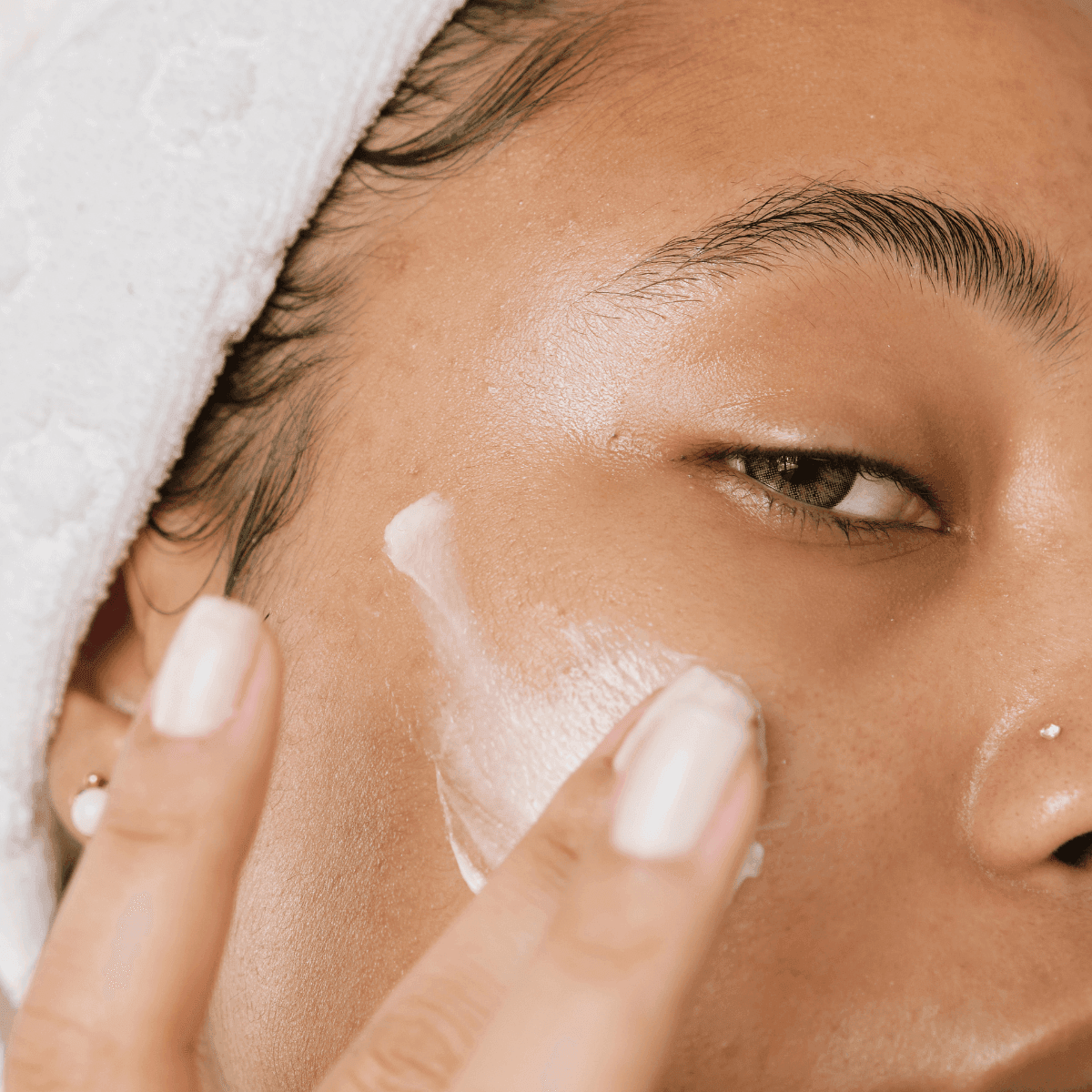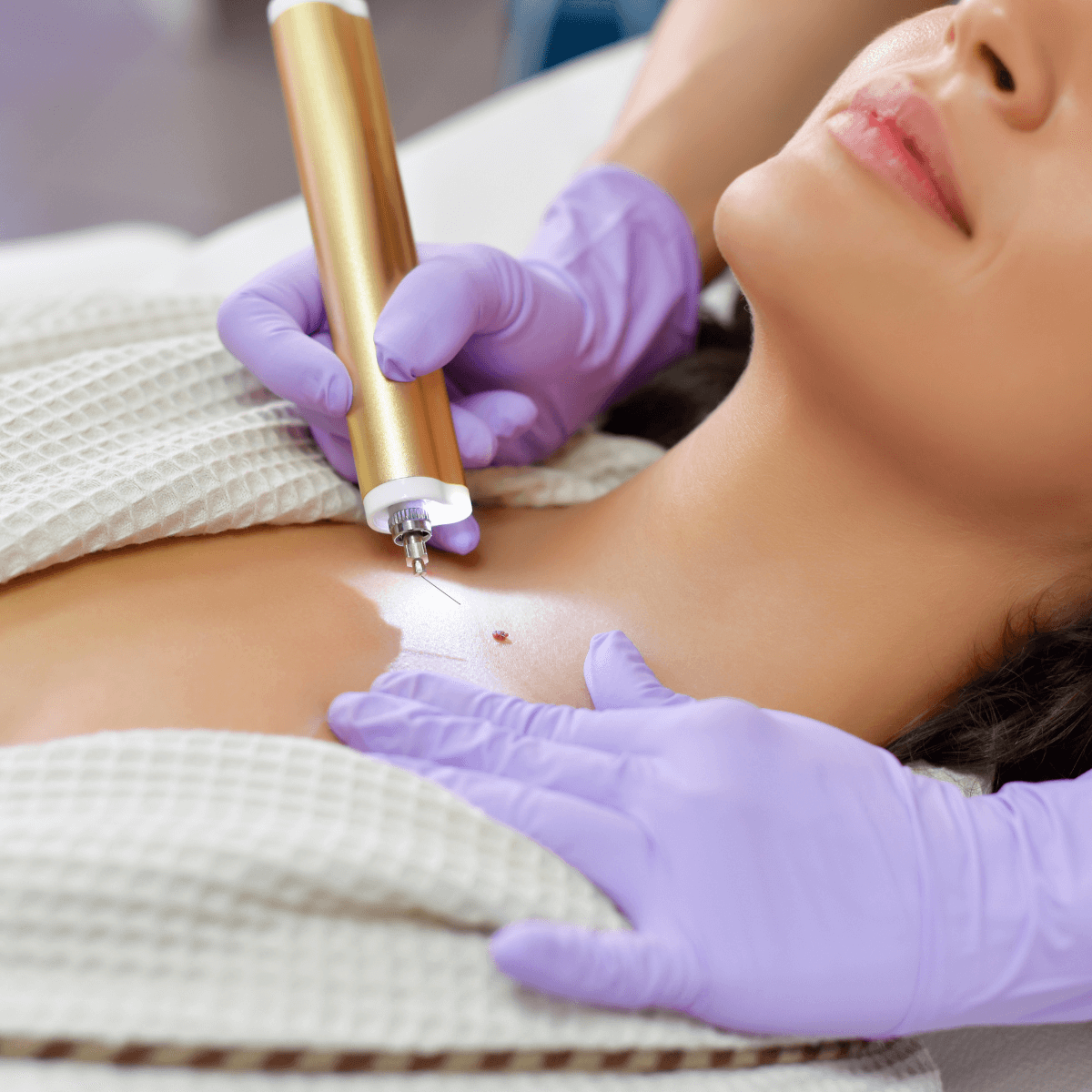Mole removal procedures are a common dermatological practice aimed at addressing both cosmetic concerns and potential health risks. Whether removing a mole for aesthetic reasons or to rule out skin cancer, understanding the various techniques and their implications is essential for making informed decisions. In this article, we explore the most effective methods for mole removal, the benefits of timely intervention, and the importance of aftercare to ensure optimal results.
Contents
Recognizing a dangerous mole
Regular mole inspection is an important part of skin health, particularly in detecting potential skin cancers like melanoma. Here’s a detailed approach to assessing moles using the “ABCDE” rule:
- A – Asymmetry: A healthy mole is typically symmetrical. If one half of a mole looks different from the other, it may be a cause for concern.
- B – Border: Check for smooth, defined edges. Moles with irregular, blurred, or jagged borders can be suspicious.
- C – Color: Consistent color throughout the mole is a good sign. If you notice multiple colors – like shades of brown, black, red, white, or blue – consult a dermatologist.
- D – Diameter: Moles larger than 6mm (the size of a pencil eraser) are more likely to be concerning. However, melanomas can also be smaller, so monitor any mole that stands out.
- E – Evolving: Any noticeable changes in a mole’s size, shape, color, or elevation, or the onset of symptoms like bleeding, itching, or crusting, should prompt further investigation.
Performing regular self-examinations in good lighting, with the help of a mirror or a partner for hard-to-see areas, can help track changes. Consider taking photos for comparison over time.
It’s crucial to consult a dermatologist if a mole shows any of the above signs or appears noticeably different from others. Regular professional skin evaluations are recommended, especially if you have risk factors like a history of skin cancer.

The importance of preventative care
Preventative care is one of the most effective strategies for reducing the risk of skin cancer, particularly melanoma, which often develops from moles. Daily sun protection is key. Ultraviolet (UV) radiation from the sun is a leading cause of skin damage, including mutations that can lead to cancer. Wearing broad-spectrum SPF 30 or higher every day – even on cloudy days – helps shield your skin from harmful rays.
Moles are particularly sensitive to sun exposure, so covering them with clothing or applying sunscreen directly to them is essential. Reapplying sunscreen every two hours, especially after swimming or sweating, is crucial to maintain protection. Additionally, avoiding peak sun hours (10 a.m. to 4 p.m.) can reduce exposure to the strongest UV rays.
Preventative care also includes regular self-examinations and dermatologist visits to catch any early signs of abnormal moles. Early detection can significantly increase the chances of successful treatment if skin cancer does develop.
By adopting these protective habits, you minimize the damage UV rays can cause, reducing your overall risk of developing mole-related skin problems. Preventative care is not just about avoiding skin cancer – it also promotes healthier, younger-looking skin in the long term.
Most common techniques for mole removal
Dermatologists use several techniques to remove moles, depending on factors like the mole’s size, location, and whether it poses a medical risk. The most common methods include:
Shave Excision
In this procedure, the dermatologist uses a small blade to shave off the mole at skin level. This method is generally used for smaller, raised moles that aren’t deeply rooted. Shave excisions typically don’t require stitches, and the area heals naturally, often leaving a small scar.
Surgical Excision
For larger moles or those suspected of being cancerous, surgical excision is often recommended. The dermatologist cuts out the mole along with a small margin of surrounding tissue to ensure complete removal. The wound is then closed with stitches. This method provides a biopsy sample for further analysis if needed.
Cryotherapy
In some cases, especially with non-cancerous moles, dermatologists may use liquid nitrogen to freeze the mole off. The mole eventually falls off as the skin heals. This technique is quick and minimally invasive but may require multiple treatments.
Laser Removal
Laser treatment is often used for smaller, non-cancerous moles or those in hard-to-reach areas. The laser vaporizes the mole tissue with minimal damage to the surrounding skin.
These techniques are generally safe and effective, with minimal recovery time. Consultation with a dermatologist ensures that the appropriate removal method is selected based on individual needs.

The best time to remove a mole
Fall and winter are often considered the best seasons for mole removal due to several factors that help optimize healing and reduce potential risks. Cooler weather typically means less sun exposure, which is crucial since UV rays can interfere with the healing process. After mole removal, the treated area is more sensitive to the sun, making it susceptible to hyperpigmentation or scarring if exposed to UV light. During fall and winter, there’s less risk of accidental sun exposure, making it easier to protect healing skin.
In cooler months, it’s also more comfortable to wear clothing that covers the treated area, reducing irritation and providing an additional barrier against the elements. This contrasts with warmer months, when wearing less clothing and engaging in outdoor activities increases the risk of sun damage and potential infection.
Mole removal procedures carry minimal risks, such as infection, scarring, or changes in pigmentation. However, these risks can be heightened in summer when heat, humidity, and sweating can introduce bacteria to the wound site, slowing healing. Additionally, higher activity levels during the summer can strain healing skin, increasing the likelihood of complications.
By choosing fall or winter for mole removal, you give your skin the best environment for a smoother, safer recovery.
Aftercare tips for optimal skin health
Proper aftercare following mole removal is essential for optimal healing and minimizing the risk of complications like infection or scarring. After the procedure, your dermatologist will typically recommend keeping the area clean and covered with a bandage for the first 24-48 hours. Gently cleanse the area with soap and water, then apply an antibiotic ointment to promote healing and prevent infection.
It’s important to avoid picking at any scabs or crust that forms, as this can lead to scarring. If stitches were used, follow your dermatologist’s instructions on when to have them removed and how to care for the wound in the meantime.
Keep the treated area protected from the sun, as UV exposure can darken the scar and prolong healing. Wearing sunscreen with at least SPF 30 and covering the area with clothing will help protect the skin as it heals. By following these aftercare tips, you can ensure the best possible results from your mole removal.


